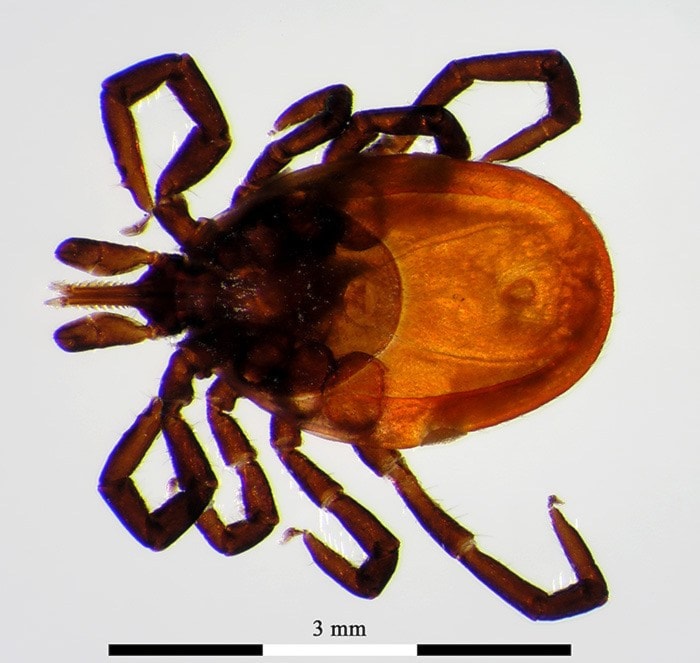To raise awareness of the risks of Lyme disease, Nelson resident Mary Jane Jojic, in conjunction with the Canadian Lyme Foundation, is sponsoring the dual film screening Under Our Skin and Emergence.
May is Lyme Disease Awareness Month. The free films will be followed by questions and answers with Jim Wilson of the Canadian Lyme Foundation.
Mandy Hughes eyes uncertainty as she battles chronic Lyme disease in Under Our Skin, a film by Andy Abrahams Wilson.

Lyme disease is a serious illness which spreads by the bite of infected blacklegged ticks. Although commonly found in wooded areas, ticks can be found pretty well anywhere because they are carried by birds and other animals they feed on.
According to the foundation, there are approximately 40 species of ticks in Canada, but fortunately, only a few transmit Lyme disease. While not all blacklegged ticks carry the disease, populations of infected ticks are growing.
People come into contact with them while golfing, hiking, camping or gardening.
If not identified and treated early, Lyme disease can cause serious health issues. But there are simple and effective measures you can take to protect against it. As you prepare to spend time outdoors, now’s the time to learn more about Lyme disease and how to prevent it.
According to Wilson, Lyme disease is occurring in the West Kootenay and has been for decades.
“Luckily it occurs in relatively low numbers,” he wrote. “Lyme disease is a very difficult organism to create a vaccine for. There was one that came out in the late ‘90s but it was a dismal failure and was removed from the market. While many companies are trying to come up with a vaccine, I do not expect to see an effective vaccine in my lifetime.”
Most ticks in the West Kootenay are either the Rocky Mountain wood tick, or the smaller western blacklegged tick who have dark shields behind their head. The wood tick is larger and has a light coloured shield behind its head.
You can see the different ticks here: canlyme.com.
A number of individuals in this community have been diagnosed with Lyme disease, including Jojic’s son.
“Most people, including the medical community, are under the impression this is still a very rare ailment in Canada,” wrote Jojic. “Unfortunately, this is not the case.”
Her son was bitten three years ago while walking his dog at the former Kootenay Forest Products site in Nelson.
“He could not get diagnosed or treated in British Columbia,” Jojic wrote. “We were told there’s no lyme in BC, it’s the wrong shape rash, it’s the wrong time of year, so on.”
They finally went to the United States where her son was diagnosed and treated and is now back to high school and leading a normal life.
“The longer you go undiagnosed, the greater the chance of not obtaining a full recovery,” Jojic said. “My goal, in sponsoring this event in partnership with the Canadian Lyme Foundation, is to prevent other families from going through what we have had to go through.”
The films will be shown on Saturday, May 23, at 6:30 p.m. at the Nelson United Church basement.
